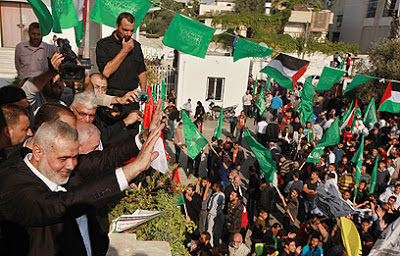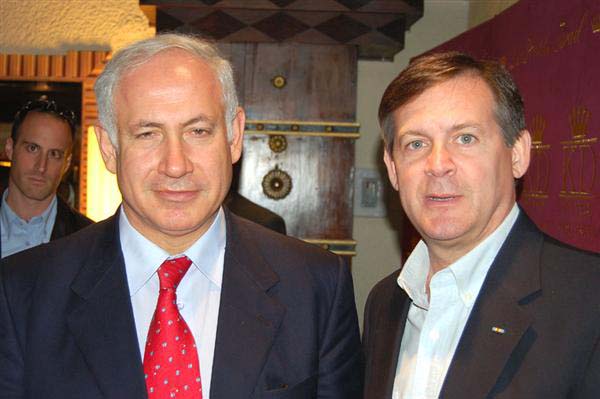Finally, Season 3 of Fauda is available on Netflix. The series tells the stories of an Israel Defense Forces Mista'arvim (undercover counter-terrorism units) team as they pursue Hamas terrorists. See my review of seasons 1 and 2.
This season, the area of operations shifts to the south. Seasons 1 and 2 occurred in the Palestinian Authority area on the West Bank around Nablus (Shechem), north of Jerusalem (al-Quds). In Season 3, the action begins in the southern portion of the West Bank to the Hebron (al-Khalil) area. By episode 6, the operation moves to the Gaza Strip. I have not been to the Gaza Strip in a long time - it was pretty bad then, and if this is an accurate depiction, it appears to have gotten worse. It is a Hamas* terrorist breeding ground.
Normally, I would advise viewers to watch Seasons 1 and 2 first, but since this story is in a different venue, the terrorist targets do not seem to be related, and there are only limited references to things from the previous seasons, so you could just watch this season.
One of my concerns with many of these shows is the lack of maps. Yes, I know these are fictional stories, but when we are talking about Israel and the Palestinians, be it the West Bank or the Gaza Strip, geography – locations, distances, and terrain – become very important.
I have taken the liberty of creating a map of the operations area. I have labeled the major places - those with red dots are either locations in which there is action in the series, or is mentioned in the series. Click for a larger view.
Note: I have tried not to provide spoilers to the story line, but only make comments on things that you might find interesting as you watch.
The initial action takes place in the city of Dhahiriya ( الظاهرية – the correct transliteration using the U.S government approved system would be al-Zahiryah). Dhahiriya is located in the Hebron Governorate, 14.3 miles southwest of the city of Hebron (الخليل – al-Khalil in Arabic) in the southern West Bank, with a population of almost 40,000.
The story addresses Palestinian tunnels that allow surreptitious passage from inside the Hamas-controlled Gaza Strip under the border and into Israel proper, into an area the Israelis call “the Gaza Envelope.” This refers to the populated areas of Israel within seven kilometers of the Gaza Strip, in other words, areas that are in range of mortars and Qassam rockets fired by Hamas and Islamic Jihad from inside the Gaza Strip.
The tunnels have been in the news lately as the Israelis try to find and destroy them, as they pose a significant threat. These well-engineered tunnels can reach over a mile into Israel, allowing terrorists to launch attacks behind Israeli military posts. It is a real concern to Israeli security officials.
The tunnel in the story reaches just into Israel near the city of Sderot, located just opposite the northeast corner of the Gaza Strip. Sderot is also known as "rocket city" because of the huge number of al-Qassam rocket attacks fired by Hamas's military wing - the 'Izz-al-Din Qassam Brigades - or Islamic Jihad. I visited Sderot after the Israeli-Hamas conflict of 2008-2009 - read my article on Sderot.
Once the tunnel depicted in the story is utilized in the reverse direction, Sderot to Jabaliya, the operation shifts to Gaza.
Some things about the names of the characters in the story. You will hear actual first names, and you will hear people referred to as "Abu xxxx" (father of xxxx) and "Um xxxx" (mother of xxxx). These are what linguists call a teknonym, or in Arabic, a kunyah. A teknonym is the nickname of an adult derived from the name of his/her eldest child. For example, my son's name is Michael, I would be known to my friends as "Abu Mishal."
There is a variation of the kunyah used by Islamist fighters - they normally take a descriptive word, like "war" (harb) and add a last name of their origin - Abu Harb al-Tunisi would be "Father of War, the Tunisian."
So, to uncomplicate matters, here is a scorecard of the major players in Season 3.
Jihad Hamdan - Abu Bashar - recently released Hamas official, jailed for 20 years
Bashar Hamdan is a championship boxer
Nassar Hamdan - Abu Fawzi - Jihad's brother, father of Hamas fighter Fawzi Hamdan
Hani al-Jabari - Abu Muhammad - senior Hamas military commander
For my Arabic linguist colleagues:
One of the pleasures of watching this series is the ability to listen to the Arabic dialogue. Remember, when you hear English (dubbed), the characters are speaking Hebrew.
The subtitles are, overall, excellent – as you would expect. That said, I wish the interpretation was a closer to a translation of the actual Arabic text. The interpreters have taken a lot of literary license in the choice of the words. It really is a minor issue, but for someone who understands the Arabic, it can be a little disappointing.
As for the dialect, it has not changed – they are still speaking the West Bank version of Levantine, which linguistics specialists tell me is called Southern Levantine Arabic. To me, who has listened to hundreds of thousands of hours of various dialects, it differs slightly from what I am most familiar with - the Northern Levantine Arabic spoken in Syria and Lebanon.
My non-technical, non-linguistic explanation – this South Levantine dialect is spoken mainly in the Palestinian areas of Israel, the West Bank, and the Gaza Strip, as well as a small part of Jordan.
To me, it sounds like a mixture of Syrian and Egyptian, but definitely more Syrian. What is obvious it the influence of the Egyptian syntax and the use of the appended Arabic letter shin (ش) to indicate a negative, usually without the preceding negative ma or la. It leads to some humorous sounds, especially when a negative precedes shi, the colloquial word for thing or something. My favorite: "My wife does not know anything." Marti t’arufshi shi.
As the operation shifts to Gaza, we hear more Egyptian influence. The Levantine hawn (here) becomes hina, and ma’ (water) becomes maya – things like that.
Okay, that’s probably too far down in the weeds for most readers....
Overall assessment - a tight, well-told story, focused on one major case. I couldn't stop watching, so plan enough time to binge it in one sitting. Watch it here.
Good news – Fauda co-creator Avi Issacharoff announced that the cast and crew was “working right now” on developing Season 4 of the show.
____________
* Hamas is an acronym of the Arabic phrase حركة المقاومة الاسلامية (al-harakat al-muqawamat al-islamiyah), meaning "Islamic Resistance Movement." The Arabic word 'hamas' (حماس) means enthusiasm or impassioned, although the Hamas charter interprets it to mean strength and bravery. The US State Department designated Hamas a foreign terrorist organization in 1997.
Tweet
































.jpg)
